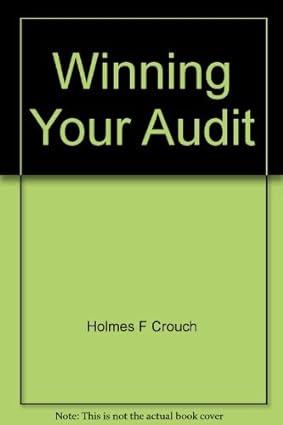Question
1) Omaha Plating Corporation is considering purchasing a machine for $1,500,000. The machine is expected to generate a constant after-tax income of $100,000 per year
1) Omaha Plating Corporation is considering purchasing a machine for $1,500,000. The machine is expected to generate a constant after-tax income of $100,000 per year for 15 years. The firm will use straight-line (SL) depreciation for the new machine over 10 years with no residual value.
In percentage terms, what is the annual accounting (book) rate of return (rounded to two decimal places) on the initial investment?
2) Omaha Plating Corporation is considering purchasing a machine for $1,500,000. The machine is expected to generate a constant after-tax income of $100,000 per year for 15 years. The firm will use straight-line (SL) depreciation for the new machine over 10 years with no residual value.
What is the payback period (in years) for the new machine, under the assumption that cash inflows occur evenly throughout the year?
3) If the present value payback period is less than the life of the project, one may conclude that:
| A. The project is not desirable in a present-value sense. | ||||||||||||||||||||||||||||||||||||||||||||||||||||||||||||
| B. The project's internal rate of return (IRR) is less than the discount (hurdle) rate. | ||||||||||||||||||||||||||||||||||||||||||||||||||||||||||||
| C. The project's IRR is equal to the weighted-average cost of capital. | ||||||||||||||||||||||||||||||||||||||||||||||||||||||||||||
| D. The project's accounting (book) rate of return exceeds the discount (hurdle) rate. | ||||||||||||||||||||||||||||||||||||||||||||||||||||||||||||
| E. The project's net present value (NPV) is positive.
4) Which of the following is not a characteristic of capital budgeting post-audits?
|
Step by Step Solution
There are 3 Steps involved in it
Step: 1

Get Instant Access to Expert-Tailored Solutions
See step-by-step solutions with expert insights and AI powered tools for academic success
Step: 2

Step: 3

Ace Your Homework with AI
Get the answers you need in no time with our AI-driven, step-by-step assistance
Get Started


